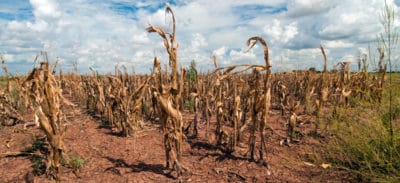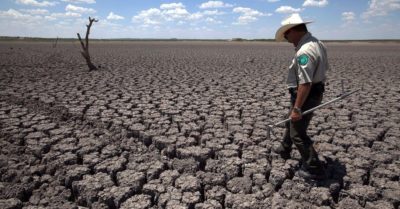
Based on a 20th century study about hydroclimate changes, human activity has an impact on the world’s risk of drought which also predicts that climate change will worsen through time.
According to the U.S. government statistics, every drought the country experiences costs about $9.5 billion. After tropical cyclones, this is the second most costly weather-related disaster. The effect of droughts increase cost of food, lessens drinking water, hinders people’s health and causes wildfires.
The journal ‘Nature’ published a research that states that greenhouse gases emitted by farming, transportation, power plants and human activities have increased the risks of drought. With an increase of risk between 1900 and 1949, this lessened between 1950 and 1975, but have been accelerating ever since. According to the authors, the increase at the start of the 20th century seems to correlate to the increase of greenhouse gas emissions and a correspondence with human activities.
Because the previous records aren’t as detailed as scientists would like in order to conclude further studies, researchers are having difficulty gauging how much human activity has affected droughts.

Paul Durack, co-author and research scientist at the Lawrence Livermore National Laboratory told Australian Science Media Centre that: “the study is the first to highlight that, in addition to direct changes to global and regional temperature and rainfall, global-scale droughts have now also been found to be impacted by human activities. This is potentially bad news for Australia, and similar climate regions such as California in the US. These regions have experienced devastating recent droughts, and if the model projected changes continue, such droughts will become more commonplace into the future.”
In present day, researchers are now using modern models, combined with records from trees to draw large conclusions. Trees are the perfect weather monitors because the concentric circles found in each tree determines how old a tree is. Scientists can also observe these rings to see what type of weather they had in any particular year. If a line in these concentric circles is wider, then it means that the year was a warm one. This is because trees don’t grow as fast during cold or dry time periods, obviously showing thinner circles during these years. When there is a drought, trees are often stressed by the weather so it barely grows during that time period.
With the increase of greenhouse gas emissions and climate change, the authors predict more droughts in the years to come. The study concludes that “the human consequences of this, particularly drying over large parts of North America and Eurasia, are likely to be severe.”
What are your thoughts? Please comment below and share this news!
True Activist / Report a typo


